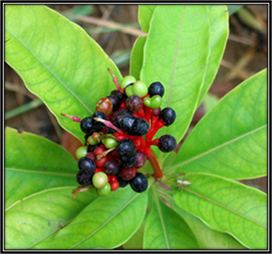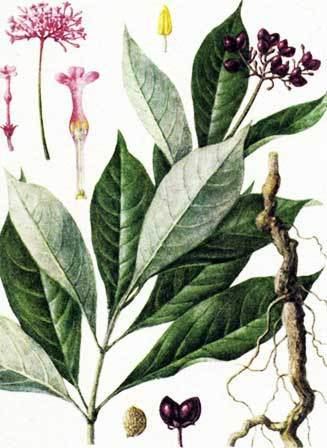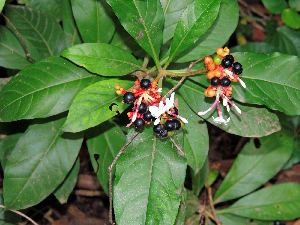Rank Species | Scientific name Rauvolfia serpentina Higher classification Rauvolfia | |
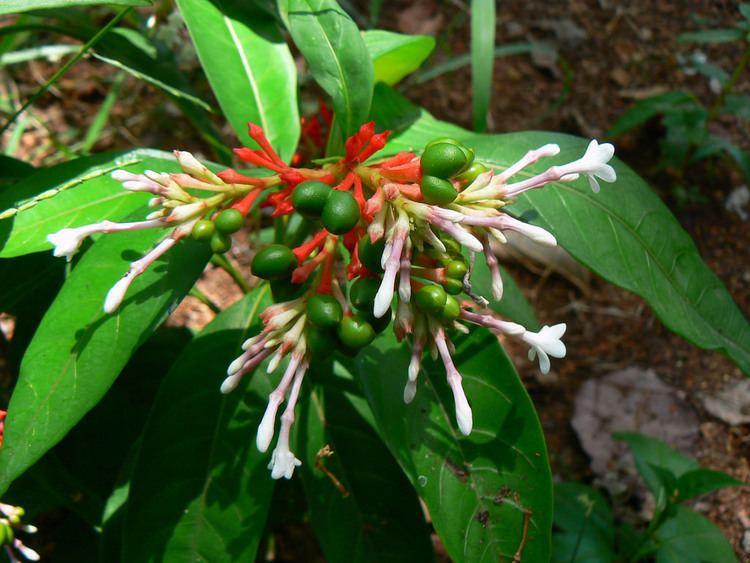 | ||
Similar Rauvolfia, Rennet, Shatavari, Arjun tree, Green chiretta | ||
Rauvolfia serpentina, or Indian snakeroot is a species of flower in the family Apocynaceae. It is native to the Indian subcontinent and East Asia (from India to Indonesia). Common English names include devil pepper and snakeroot.
Contents
- Rauvolfia serpentina with translation text
- Vernacular names
- Chemical composition
- Traditional medicine
- Other uses
- References
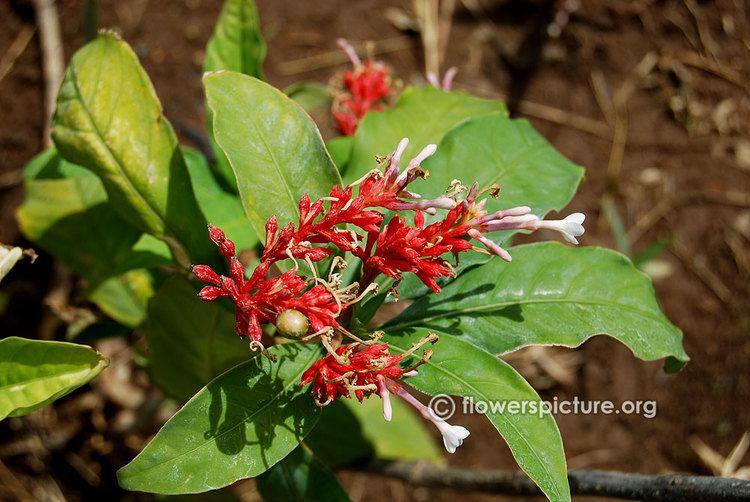
Rauvolfia serpentina with translation text
Vernacular names

English: serpentine wood Bengali: Chandra; Hindi: Chandrabagha, Chota chand; Kannada: Patalagondhi, Sarpagandhi,Shivavabhiballi, Sutranavi; Malayalam: Chuvanna-vilpori, Suvapavalforiyan; Marathi: Harkaya, Harki; Oriya:Patalgarur, Sanochada; Tamil: Chivan amelpodi; Telgu: Paataala garuda, Paataala goni; Urdu: Asrel. indonesia : pule pandak;
Chemical composition
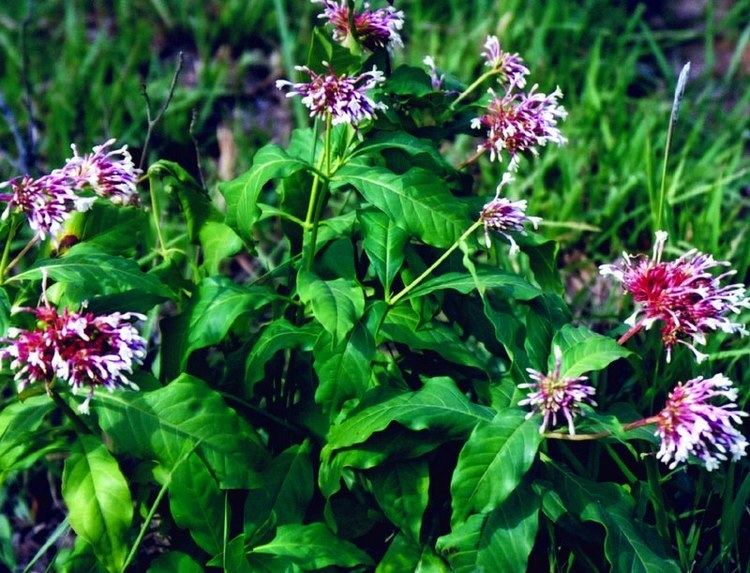
Rauvolfia serpentina The plant contains 200 alkaloids of the indole alkaloid family. The major alkaloids are ajmaline, ajmalicine, ajmalimine, deserpidine, indobine, indobinine, reserpine, reserpiline, rescinnamine, rescinnamidine, serpentine, serpentinine and yohimbine.
Traditional medicine
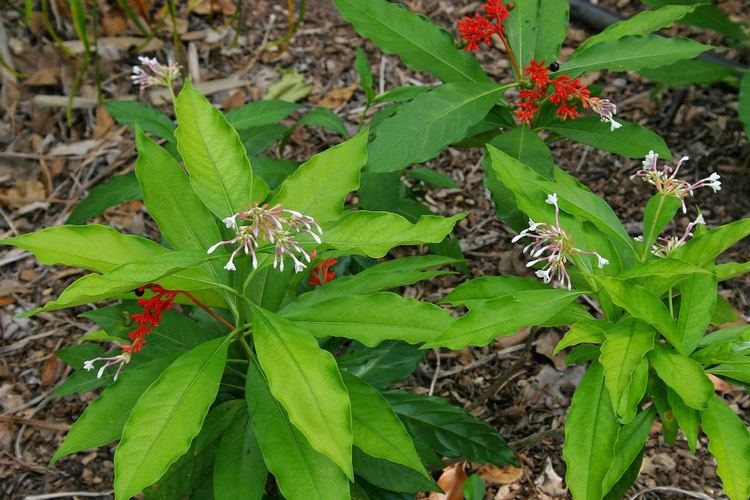
The extract of the plant has been used for millennia in India. Alexander the Great administered this plant to cure his general Ptolemy I Soter of a poisoned arrow. It was reported that Mahatma Gandhi took it as a tranquilizer during his lifetime. The plant contains reserpine, which was used as a pharmaceutical drug in Western medicine from 1954 to 1957 to treat high blood pressure and mental disorders including schizophrenia.
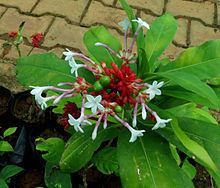
It is one of the 50 fundamental herbs used in traditional Chinese medicine, where it has the name shégēn mù (Chinese: 蛇根木) or yìndù shémù (Chinese: 印度蛇木).
Other uses
The wood, commonly known as serpentwood, is mildly popular amongst woodcarving and woodturning hobbyists.
